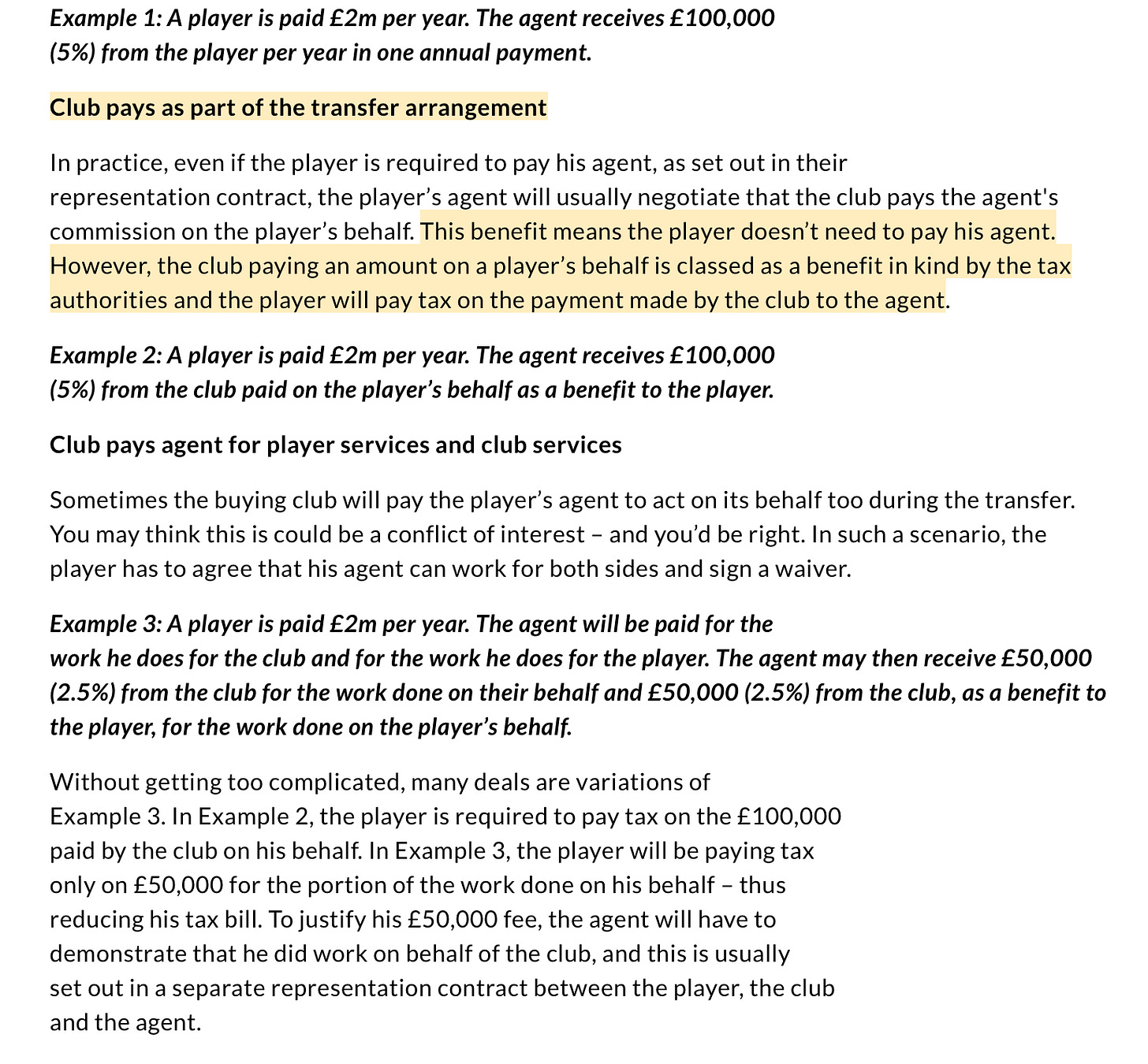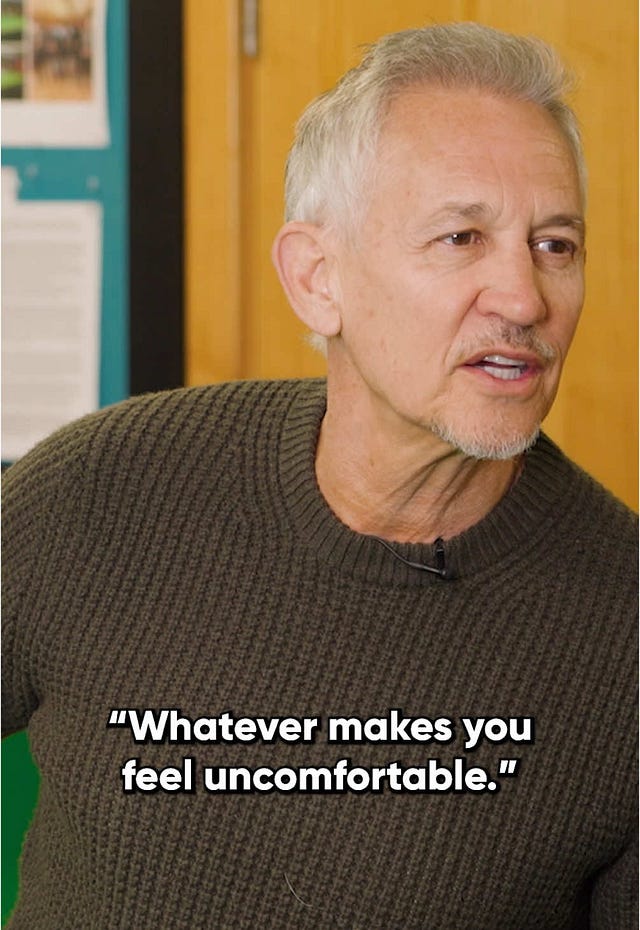Moment of the Year; The £400million prize; Tiffany to Walmart, Ari Emanuel on CAA; White smoke; Is 10,000 views good or bad; Other People's Money; See you in Lausanne
Overthinking the sports business, for money
Some moments are more interesting than other moments
“some moments are nice, some are
nicer, some are even worth
writing
about.”
― Charles Bukowski, War All the Time: Poems 1981 - 1984
Which is a fantastically pretentious way in to a bit about a new sport industry award category.
Next week Unofficial Partner is recording a podcast in the room where it happens.
The FEVO Sports Industry Awards has a new category…Business Moment of the Year.
And Nick Keller has flung the doors open in a Conclave meets Drive to Survive type move, exposing the secretive and arcane judging process to the sunlight of podcasting.
I’ll be cajoling a panel of proper industry heavyweights in to revealing their deepest secrets.
Failing that, I’ll get them to say which story of the last year made them put down their phone and ponder the sheer enormity of it all.
In the meantime, which moment tickles your fancy from the shortlist below - results to be revealed to the judges at the end of the session.
Click and tell here:
The Agency sector: Following P/E following the money
So, the Premier League is a £400million a year business for the football agency sector. See the official data release this week:
This chart helps explain a few movements happening on the supply side, something we discussed in a recent Other People’s Money episode with Daniel Geey.
You can see why American p/e wants in.
Professional services in European soccer is often characterised as a mix of Arfur Daley (Google him kids), boutiques, specialist law firms and assorted parents, brothers and dodgy adviser mates.
We can intellectualise The Why all day: Recurring revenue streams; De-risking at scale; operational efficiencies; service diversification.
But also, look at the margins.
North American sports agent commissions are typically capped - 3% in NFL, 4% in NBA.
Soccer agents can make 10% from the selling clubs during player transfers, plus commissions up to 6% on player wages.
Consolidation makes sense to American p/e: Bruin Capital’s As1 is the new umbrella for recent buyouts of Nomi Sports, Position Number, Promoesport, and Football Division Worldwide. The unit will be headquartered in London with nine offices across Spain, Portugal, and the UAE, with former Atletico Madrid board member Ignacio Aguillo as CEO. The most eye-catching clients are Liverpool's Luis Díaz, Manchester United's Bruno Fernandes, Chelsea's Moisés Caicedo, and Manchester United coach Rúben Amorim.
Providence p/e bought in to Wasserman which used the money to redeem previous investors RedBird Capital Partners and Madrone Capital Partners, allowing founder Casey Wasserman to keep a controlling stake.
And just this month, Velocity Capital put up over $100 million in to Unique Sports Group, a London-based talent agency representing over 350 soccer players including West Ham's Aaron Wan-Bissaka and Tottenham's Brennan Johnson.
Always good to follow the money.
Students of the agency sector will see a theme to all this p/e activity and point to the sale of CAA in 2023.
CAA expanded its footprint in 2022 with a $750 million deal to acquire ICM Partners, which followed the 2019 acquisition of Base Soccer Agency and ICM's 2020 purchase of Stellar Group.
CAA has been majority owned by TPG since 2014 (the private equity firm first took a 35 percent stake in the company in 2010). The sale was a big exit for TPG, which valued the talent agency at $1.1 billion when it acquired its majority stake.
Terms of the deal were not disclosed, though TPG was said to be seeking a valuation of about $7 billion. The sale came a year after CAA reshaped the talent agency landscape by acquiring ICM. The combined CAA and ICM was valued at the time at $5 billion.
Ari Emanuel gave good quote on this deal, to Steve Dubner on the Freakonomics podcast at the time of the above buyout.
DUBNER: You’re not going to like this question, but someone wondered to me whether you’ve taken your eye off the representation business to the point where, you know, a Bryan Lourd from C.A.A. or any other number of big-time agents may start eating your lunch.
EMANUEL: Well, I think what they should just do is call Tyler Perry. Call Adam McKay. Call Larry David. Call Dwayne Johnson. Call Marty Scorsese.
DUBNER: But are you worried about —.
EMANUEL: Those are my clients.
DUBNER: But are you worried about not being the biggest dog?
EMANUEL: No. We’re the biggest dog by a lot. We still represent a lot of clients. Anytime they need us, we’re there.
DUBNER: Do you still like agenting?
EMANUEL: I love it. But when we bring things to the table, any of the people at the company, unlike U.T.A. or C.A.A., they have this whole other world they can pull from, which is what’s needed at an agency now. The problem when you’re at one of those other places is a client gets hot, Kevin Huvane or Bryan Lourd starts calling them around your back. That’s f***ed up. That’s bad culture. Remember, they were the biggest agency — Mike Ovitz gave them everything. They had, for lack of a better metaphor, Tiffany. And you know what they did with it? And I think Walmart’s a great company. But let’s just say they made it Walmart. And they didn’t leave. Like you’re not empowering people. Like, what kind of life are you? That’s horrible.
DUBNER: Maybe you did like that question. I thought you wouldn’t like it. You actually liked it quite a bit.
EMANUEL: I would pay the salaries of Bryan Lourd, Kevin Huvane to stay in the job. I would. I would pay their salaries. It’s the greatest competition of all time.
How many viewers is worth a headline?
A report on a county cricket match in The Times this week.
I threw it to the WhatsUP group, the best backchannel in the sports business.
Steve Nuttall has had big jobs at YouTube and Sky. So has a view worth noting.
Coming next week is our podcast from Bratislava, recorded at the EBU’s Annual Assembly.
The question we asked was, what is free to air in the YouTube era?
One underrated element in the conversation is that not all eyeballs are the same.
There is something else happening in the exchange beyond CPMs, an intangible that plays a role in ascertaining value of a ‘view’. There’s something in this about local v global, as Steve mentions above.
But that’s not all of it. Sponsors for example, still seem to like their brands appearing on TV channels rather than on YouTube.
Why? Medium is the message? Is that still a thing? Or the sense of collective viewing as opposed to the personalised or atomised world created by the platforms?
Something in there.
Look out for our EBU pod next week.
The day Jordan played Lineker
 Tiktok failed to load.
Tiktok failed to load.Enable 3rd party cookies or use another browser










